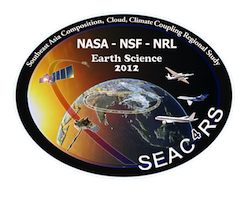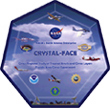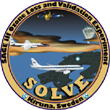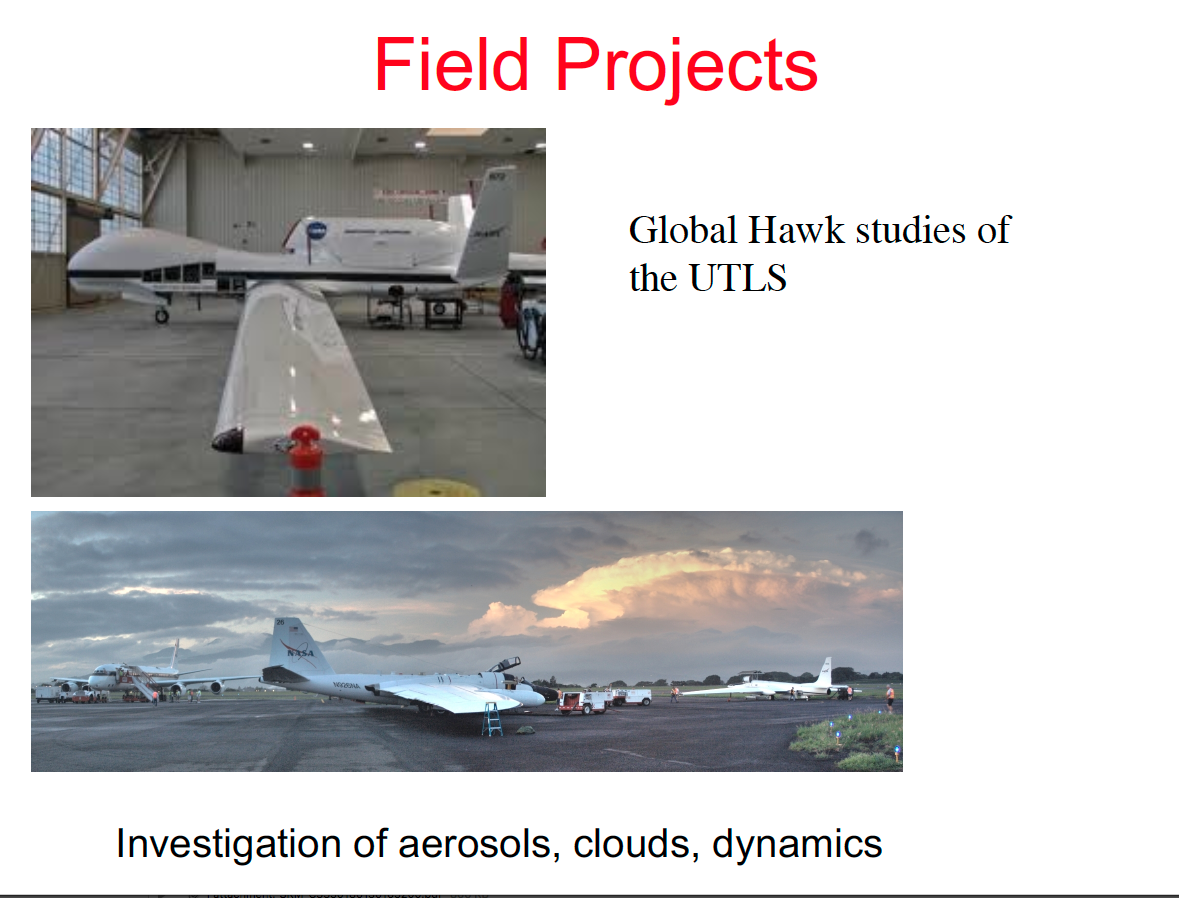Field Programs

SEAC4RS
| Project: | Studies of Emissions and Atmospheric Composition, Clouds, and Climate Coupling by Regional Surveys |
|---|---|
| Sponsor: | NASA |
| Operation: | 2013 |
| Location: | Houston, Texas |
Brian Toon was the Campaign Leader for the SEAC4RS Mission which took place in the continental U.S. in 2014. The mission used the NASA DC-8 and ER-2 aircraft as well as the SPEC Inc Learjet and ground based measurements. Among the goals was to understand the vertical transport of pollutants from the surface, through deep convective clouds and then into the stratosphere through the North American monsoon circulation. Further information can be found at http://espo.nasa.gov/missions/seac4rs or Toon, O. B., et al. (2016), Planning,
implementation, and scientific goals of the Studies of Emissions and Atmospheric Composition, Clouds and Climate Coupling by Regional Surveys (SEAC4RS) field mission, J. Geophys. Res.
Atmos., 121, doi:10.1002/2015JD024297.
ATTREX
| Project: | Airborne Tropical Tropopause Eperiment |
|---|---|
| Sponsor: | NASA |
| Operation: | 2011-2015 |
| Location: | Dryden, CA; Guam, Australia |
Brian Toon is one of the Platform Scientists for the ATTREX experiment, which seeks to improve our understanding for water vapor and cirrus clouds in the tropical upper troposphere and lower stratosphere. This experiment uses the NASA Global Hawk unmanned aircraft system. Several flight series were being carried out over a 5 year period over various parts of the Pacific Ocean. further information can be found at http://espo.nasa.gov/missions/attrex

TC4
| Project: | Tropical Composition, Cloud and Climate Coupling Mission (TC4) |
|---|---|
| Sponsor: | NASA |
| Operation: | July 2007 |
| Location: | San Jose , Costa Rica |
Brian Toon was the Project Scientist for the TC4 mission which used the NASA ER-2, WB-57f and DC-8 aircraft to investigate the chemical, dynamical and radiative processes occurring in the tropical upper troposphere. More information can be found at http://www.espo.nasa.gov/tc4/ and at Toon, O. B., et al. (2010), Planning, implementation, and first results of the Tropical Composition, Cloud and Climate Coupling Experiment (TC4), J. Geophys. Res., 115, D00J04, doi:10.1029/2009JD013073.

CRYSTAL-FACE
| Project: | Cirrus Regional Study of Tropical Anvils and Cirrus Layers – Florida Area Cirrus Experiment (CRYSTAL – FACE) |
|---|---|
| Sponsor: | NASA, ONR, NSF, DOE, NOAA, NPOESS |
| Operation: | June – August, 2002 |
| Location: | Key West Naval Air Station, Florida, USA |
CRYSTAL-FACE aimed at understanding the role of deep convection in forming high altitude cirrus, and their role in influencing Earth’s energy budget. The field mission took place in the summer of 2002 using six aircraft to measure cloud characteristics and determine how clouds alter the atmosphere’s temperature.This was one of the first NASA field missions to use aircraft real time positioning so that the planes could be coordinated in real time to measure the rapidly varying field of clouds. Brian Toon was the Co-Project Scientist for the mission. See http://www.espo.nasa.gov/crystalface/index.html for more information.

SOLVE
| Project: | SAGE III Ozone Loss and Validation Experiment (SOLVE) |
|---|---|
| Sponsor: | NASA, European Commission |
| Operation: | December 1999 – March 2000 |
| Location: | Kiruna, Sweden |
The SAGE III Ozone Loss and Validation Experiment (SOLVE) was designed to examine the processes controlling stratospheric ozone levels at mid- to high latitudes. Measurements were made in the Arctic high-latitude region in winter using the NASA DC-8 and ER-2 aircraft, as well as balloon platforms and ground-based instruments. Brian Toon was a Co-Project Scientist for this mission. More information can be found at http://www.espo.nasa.gov/solve/

SUCCESS
| Project: | SUbsonic aircraft: Contrail & Cloud Effects Special Study (SUCCESS) |
|---|---|
| Sponsor: | NASA, DOE, NSF, NOAA |
| Operation: | April – May, 1996 |
| Location: | Northern Oklahoma, southern Kansas, US Rocky Mountains, and the Gulf of Mexico |
Brian Toon was the project scientist and subsequently edited a special issue of Geophysical Research Letters for this NASA mission. SUCCESS was a NASA field program using scientifically instrumented aircraft and ground based measurements to investigate the effects of subsonic aircraft on contrails, cirrus clouds and atmospheric chemistry. The project helped to better determine the radiative properties of cirrus clouds and of contrails so that satellite observations can better determine their impact on Earth’s radiation budget. It provided insight into how cirrus clouds form, whether the exhaust from subsonic aircraft presently affects the formation of cirrus clouds, and if the exhaust does affect the clouds whether the changes induced are of climatological significance. Further information can be found at http://www.espo.nasa.gov/success/
Tote/Vote; AASE/AASE2/AAOE
| Project: | |
|---|---|
| Sponsor: | NASA, DOE, NSF, NOAA |
| Operation: | 1987-1997 |
| Location: | various |

